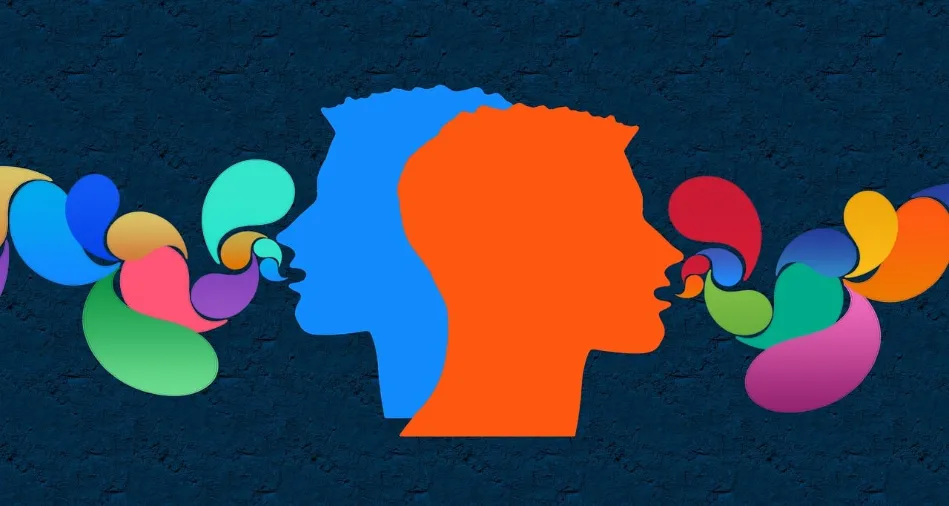[read-time]

Change management has become increasingly crucial for organizations seeking to navigate change effectively. Personality color traits, a widely recognized framework, provide valuable insights into an individual’s preferences, communication styles, and decision-making processes. By leveraging this knowledge, organizations can tailor their change management strategies to resonate with diverse personalities, fostering engagement, buy-in, and ultimately, successful transformation.
Personality color traits are typically categorized into four primary colors: Green, Blue, Red and Yellow. Each color represents a distinct set of characteristics and tendencies:
- Green: Those with a Green personality are often analytical, logical, and data-driven in their approach.
- Blue: Individuals with a Blue personality are typically empathetic, supportive, and prioritize relationships and collaboration.
- Red: Represents energy, assertiveness, and courage.
- Yellow: Reflects positivity, openness, and extraversion.
By understanding these personality traits, organizations can tailor their communication strategies, address potential concerns, and leverage the strengths of each personality type during the change management process.
The importance of managing change
In today’s business landscape, change is inevitable. Organizations that fail to adapt and embrace change risk falling behind their competitors and becoming obsolete. Effective change management is crucial for organizations to navigate these transformations successfully, ensuring that changes are implemented smoothly, efficiently, and with minimal disruption to operations.
Successful change management not only mitigates resistance but also fosters a culture of continuous improvement and innovation. By proactively addressing the human aspect of change, organizations can enhance employee engagement, productivity, and overall organizational performance.
Introduction to change management
Change management is a structured approach to transitioning individuals, teams, and organizations from their current state to a desired future state. It involves a comprehensive set of processes, tools, and techniques designed to manage the people side of change, ensuring that changes are implemented effectively and with minimal disruption.
Effective change management addresses various aspects of organizational transformation, including communication, training, stakeholder engagement, and resistance management. By addressing these critical elements, organizations can increase the likelihood of successful change adoption and minimize the risks associated with change initiatives.
Different change management models
Throughout the years, various change management models have been developed to guide organizations through the complexities of organizational change. These models provide structured frameworks and actionable steps to navigate the change process effectively. Some of the most widely recognized change management models include:
- Lewin’s Change Management Model: This model, developed by Kurt Lewin, consists of three stages: Unfreeze, Change, and Refreeze.
- Kotter’s 8-Step Change Model: Introduced by John Kotter, this model outlines eight critical steps for leading successful organizational change.
- ADKAR Model: Developed by Prosci, the ADKAR model focuses on the individual’s journey through change, addressing Awareness, Desire, Knowledge, Ability, and Reinforcement.
- Bridges’ Transition Model1: Developed by William Bridges, this model emphasizes the emotional aspects of change and the importance of managing transitions effectively.
Each model offers unique perspectives and approaches to change management, allowing organizations to choose the framework that best aligns with their specific needs and organizational culture.
Exploring Kotter’s 8-Step Change Model

Kotter’s 8-Step Change Model is one of the most widely recognized and influential change management frameworks. Developed by John Kotter, a Harvard Business School professor and renowned author, this model provides a structured approach to leading organizational change successfully.
The eight steps of Kotter’s Change Model are:
- Create a Sense of Urgency: Establish a compelling need for change by highlighting the risks of maintaining the status quo and the potential benefits of transformation.
- Form a Powerful Coalition: Assemble a team of influential leaders and stakeholders who can drive the change initiative forward.
- Develop a Vision and Strategy: Craft a clear and inspiring vision for the desired future state, and develop a strategic plan to achieve it.
- Communicate the Vision: Effectively communicate the vision and strategy to stakeholders, ensuring widespread understanding and buy-in.
- Empower Broad-Based Action: Remove barriers to change and provide the necessary resources and support to enable individuals to take action.
- Generate Short-Term Wins: Celebrate and recognize early successes to build momentum and maintain motivation.
- Consolidate Gains and Produce More Change: Use the momentum from short-term wins to drive further changes and address remaining obstacles.
- Anchor New Approaches in the Culture: Institutionalize the changes by aligning organizational systems, processes, and culture with the new ways of operating.
By following these steps, organizations can effectively navigate the complexities of change and increase the likelihood of successful transformation.
Understanding the ADKAR model
The ADKAR model, developed by Prosci, is a widely recognized framework for managing individual change within organizations. Unlike other models that focus on the organizational level, ADKAR emphasizes the individual’s journey through change by addressing five key elements:
- Awareness: Individuals must first understand the need for change and its potential impact on their roles and responsibilities.
- Desire: Individuals must develop a genuine desire to support and participate in the change initiative, recognizing the personal benefits and consequences of the change.
- Knowledge: Individuals must acquire the necessary knowledge and skills to implement the change effectively, including understanding the new processes, tools, and behaviors required.
- Ability: Individuals must have the ability to implement the change, which involves providing the necessary resources, training, and support to develop the required skills and capabilities.
- Reinforcement: Individuals must receive ongoing reinforcement and support to sustain the change, ensuring that it becomes ingrained in the organizational culture and daily operations.
By addressing these five elements, the ADKAR model helps organizations facilitate individual transitions and overcome resistance to change, ultimately increasing the likelihood of successful change adoption.
Applying personality color traits to change management – 5 Essential Keys

Integrating personality color traits into change management strategies can significantly enhance the effectiveness of organizational transformations. By understanding the unique preferences, communication styles, and motivations of different personality types, organizations can tailor their approach to resonate with diverse individuals and teams.
Here are seven keys to successful change management through the lens of personality color traits:
- Communicate with Clarity and Empathy (Blue): Individuals with a Blue personality prioritize relationships and communication. Effective change management requires clear, empathetic, and frequent communication to address their concerns and foster trust.
- Provide Data-Driven Rationale (Green): Those with a Green personality value logic and data. Present a well-reasoned, fact-based case for change, supported by relevant data and analysis, to gain their buy-in.
- Foster Collaboration and Teamwork (Blue/Green): Individuals with Blue and Green personalities value collaboration and teamwork. Encourage cross-functional teams and create opportunities for open dialogue and knowledge sharing.
- Recognize and Celebrate Milestones (All Colors): Celebrating milestones and recognizing achievements is crucial for maintaining momentum and motivation throughout the change process. Tailor recognition strategies to resonate with different personality types.
- Provide Ongoing Support and Training (All Colors): Effective change management requires ongoing support and training to ensure that individuals have the necessary knowledge, skills, and resources to successfully navigate the transition. Personalize training and support efforts to address the unique needs of different personality types.
By applying these keys and leveraging the power of personality color traits, organizations can create a more inclusive and engaging change management experience, increasing the likelihood of successful transformation.
Eight More Bonus Keys!
Eight more keys to implementing change management in organizations
Implementing effective change management within organizations requires a structured and comprehensive approach. Here are more key steps to consider:
- Establish a Change Management Team: Assemble a dedicated team responsible for leading and coordinating the change management efforts. This team should include representatives from various departments and levels within the organization.
- Conduct a Readiness Assessment: Assess the organization’s current state, including its culture, processes, and readiness for change. This assessment will help identify potential barriers and areas that require additional support.
- Develop a Change Management Plan: Based on the readiness assessment, develop a comprehensive change management plan that outlines the strategies, activities, timelines, and resources required for successful implementation.
- Engage Stakeholders and Build Coalitions: Identify and engage key stakeholders, including leaders, influencers, and subject matter experts. Build coalitions and secure their support to champion the change initiative.
- Communicate Effectively: Develop and execute a robust communication plan that addresses the needs of different audiences and personality types. Utilize various channels and formats to ensure consistent and transparent communication throughout the change process.
- Provide Training and Support: Implement training programs and support mechanisms to equip individuals with the necessary knowledge, skills, and resources to navigate the change successfully. Tailor training and support efforts to address the unique needs of different personality types.
- Monitor and Measure Progress: Establish key performance indicators (KPIs) and metrics to monitor the progress and effectiveness of the change management efforts. Regularly review and adjust the strategies as needed based on feedback and data.
- Celebrate Successes and Reinforce Change: Recognize and celebrate milestones and successes along the change journey. Reinforce the new behaviors and processes to ensure that the changes become embedded in the organizational culture.
By following these steps and leveraging the power of personality color traits, organizations can increase the likelihood of successful change implementation and foster a culture of continuous improvement and adaptation.
The Takeaway
The five keys to successful change management through the lens of personality color traits provide a framework for creating an inclusive and engaging change experience.
By communicating with clarity and empathy, providing data-driven rationale, outlining processes and timelines, highlighting opportunities for growth, fostering collaboration and teamwork, recognizing and celebrating milestones, and providing ongoing support and training, organizations can navigate the complexities of change while addressing the unique needs and preferences of different personality types.
Implementing effective change management requires a structured and comprehensive approach, including establishing a dedicated team, conducting readiness assessments, developing a change management plan, engaging stakeholders, communicating effectively, providing training and support, monitoring progress, and celebrating successes.
By embracing the power of personality color traits and implementing effective change management strategies, organizations can cultivate a culture of continuous improvement, innovation, and adaptability, positioning themselves for long-term success in an ever-evolving business landscape.
Emophilia and Personality Color Traits: The Fascinating Connection Between Them
[read-time] Emophilia meaning: What is it and what does it mean? Emophilia, a term derived from the Greek word “emophilia,” meaning “love…
The Personality Color Assessment & The OCEAN Model (Big 5
[read-time] This article delves into how our personality color assessment aligns with the OCEAN Model – The Big 5 Personality Traits…
Personality Color Assessment – What Exactly is it and Why
In this article you’ll learn 5 vital benefits of personality color assessments!…
The 5 Love Languages & The Color Assessment: The Real
[read-time] Table of ContentsThe Rainbow of the Personality Color AssessmentA Groundbreaking ConceptThe Five Love Languages: A Universal Blueprint for ConnectionThe Enduring…
Welcome to the ChromaLife Blog!
[read-time] Welcome to the ChromaLife Personality Color Assessment blog: where every hue tells a story! Are you ready to dive into the…
8 Morning Habits of Highly Successful People You Can Adopt
What exactly do these high achievers do in those early hours that sets them apart? And more importantly, how can…
Are Personality Changes Possible? The Science Says Yes
Personality change, is it possible? We can often wonder if we’re stuck with the personality we’re born with or if…
The Hidden Dangers of Flow State: 2 Warning Signs You’re
Flow state is an intriguing phenomenon. Have you ever been so engrossed in an activity that time seems to stand…
Discover the Magic of Mirror Neurons! Stop Missing Out on
[read-time] Mirror neurons is a remarkable discovery in the fascinating world of neuroscience. These specialized brain cells play a pivotal role…
The Domino Effect in psychology refers to the cascading impact
[read-time] The Domino Effect in psychology refers to the cascading impact of one behavior, thought, or action leading to a chain…
Uncovering Social Desirability Bias in AI Personality Tests: The Surprising
An intriguing area of study of AI involves social desirability bias when administering personality tests to large language models (LLMs)…
- The Bridges’ Transition Model is a widely recognized framework for understanding and navigating personal and organizational change. Developed by William Bridges ↩︎











